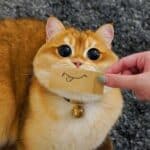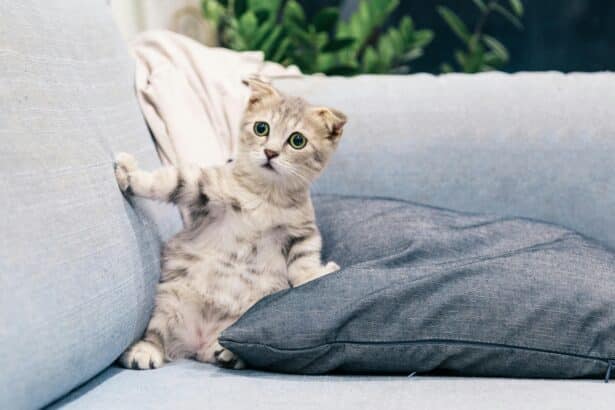Understanding your cat’s age is essential to ensuring a happy, healthy life. This will guide the way you care for them, their diet, and the different activities you share. To do this, look at various indicators that can give you an idea of their age.
Basic indicators for guessing a cat’s age
There are several elements we can use to estimate our feline’s age. These clues, such as height, weight, tooth wear, eye condition and behavior, can give us valuable information about our pet’s age.
Height and weight
A cat’s height and weight are important clues to its age. For example, kittens under six months of age are visibly smaller and lighter than adult cats. As they grow, they gain weight and their bone structure develops until they reach adult size at around one year of age. In addition, some older cats may tend to lose weight and become more fragile with age.
Tooth wear
The condition of a cat’s teeth is another very reliable age indicator. Kittens generally have white, sharp, clean teeth. As they age, cats will develop traces of tartar and their teeth will become more yellow. At a certain age, they may even start to lose some of their teeth.
Eyes and vision
With age, a cat’s eyes can also show changes. Adult cats generally have clear, haze-free, secretion-free eyes. Older cats, on the other hand, may have vision problems, show signs of cataracts, or have less brilliant eyes.
How age affects cat behavior
Beyond physical changes, a cat’s age also influences its behavior.
Age-related changes in behavior
Kittens are generally full of energy and love to play. As teenagers, they become more curious and exploratory, marking their territory. Adult cats are often calmer, but still playful. In old age, they tend to be calmer, sleep more often and their activity level decreases. Sleeping a lot can be a sign of an advanced cat.
Age-related changes in habits
A cat’s eating, sleeping and appetite habits can also change with age. For example, kittens need a lot of protein-rich food for their growth. Adult cats eat less, but stick to a balanced diet, while older cats may need food specially adapted to their state of health.
Signs of old age in cats
As your cat begins to age, many signs can be observed.
Age-related illnesses
Older cats are more likely to develop certain chronic diseases, such as diabetes, kidney failure, arthritis or other age-related health problems. To detect these health problems as early as possible, regular veterinary visits are recommended.
Age-related physical changes
Cats can also show visible signs of aging on their bodies. For example, they can turn gray, just like humans, and lose their youthful glow. An older cat may also have less lustrous fur, thicker and brittle claws, and looser skin.
How to care for your cat according to its age
By taking your furry friend’s age into account, you can ensure that he receives the care he needs to lead a happy, healthy life.
General care according to age
The care you give your cat should vary according to its age. Feeding your cat right can vary according to its age. For example, kittens need a richer diet to support their growth, while older cats need a diet adapted to their health needs. Similarly, daily activities such as playing, grooming and visits to the vet need to be age-appropriate to cope with the different stages of their lives.
By knowing your cat’s age and understanding his specific needs, you can ensure the best possible care that will contribute to a long, healthy and happy life.




